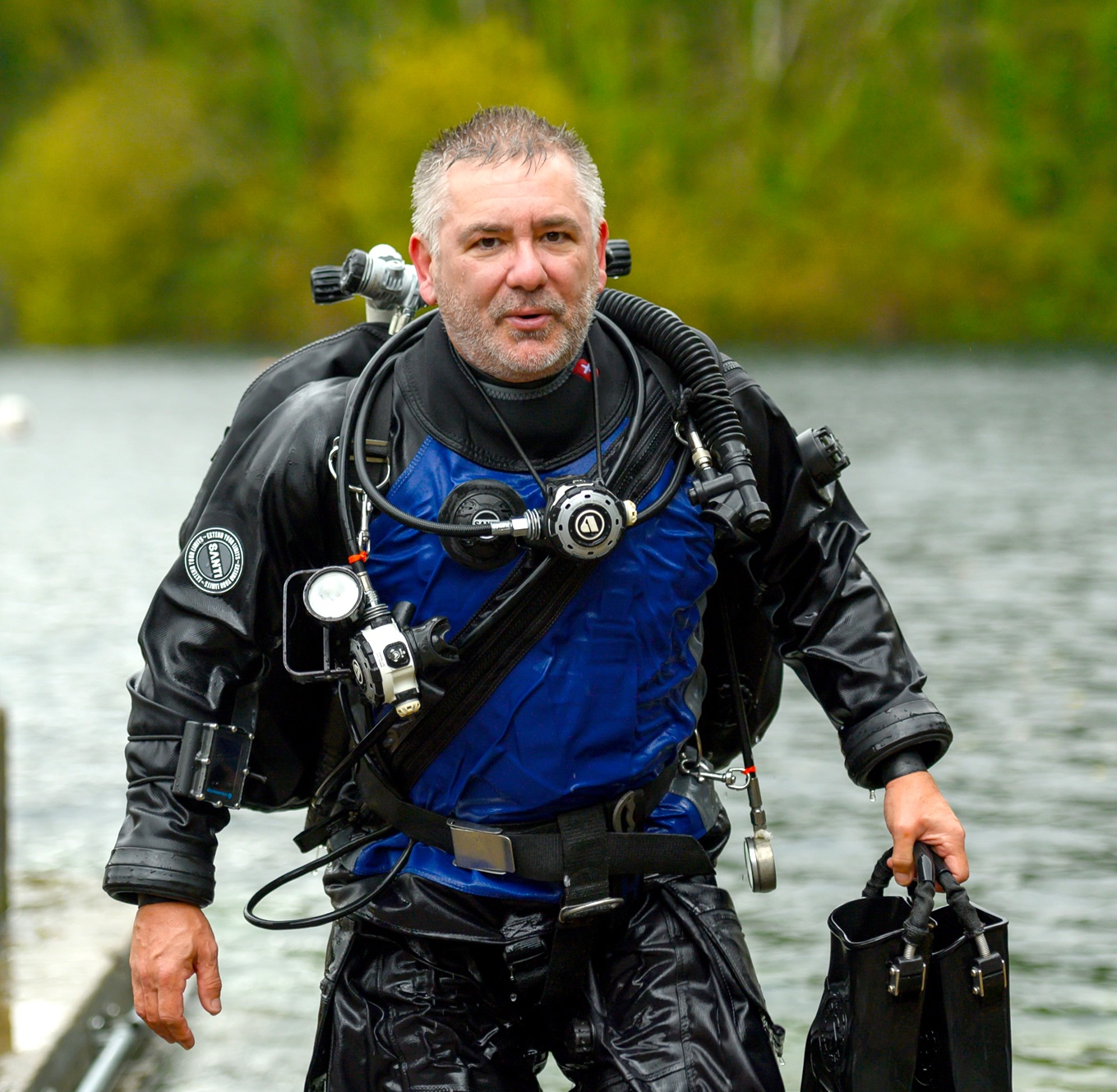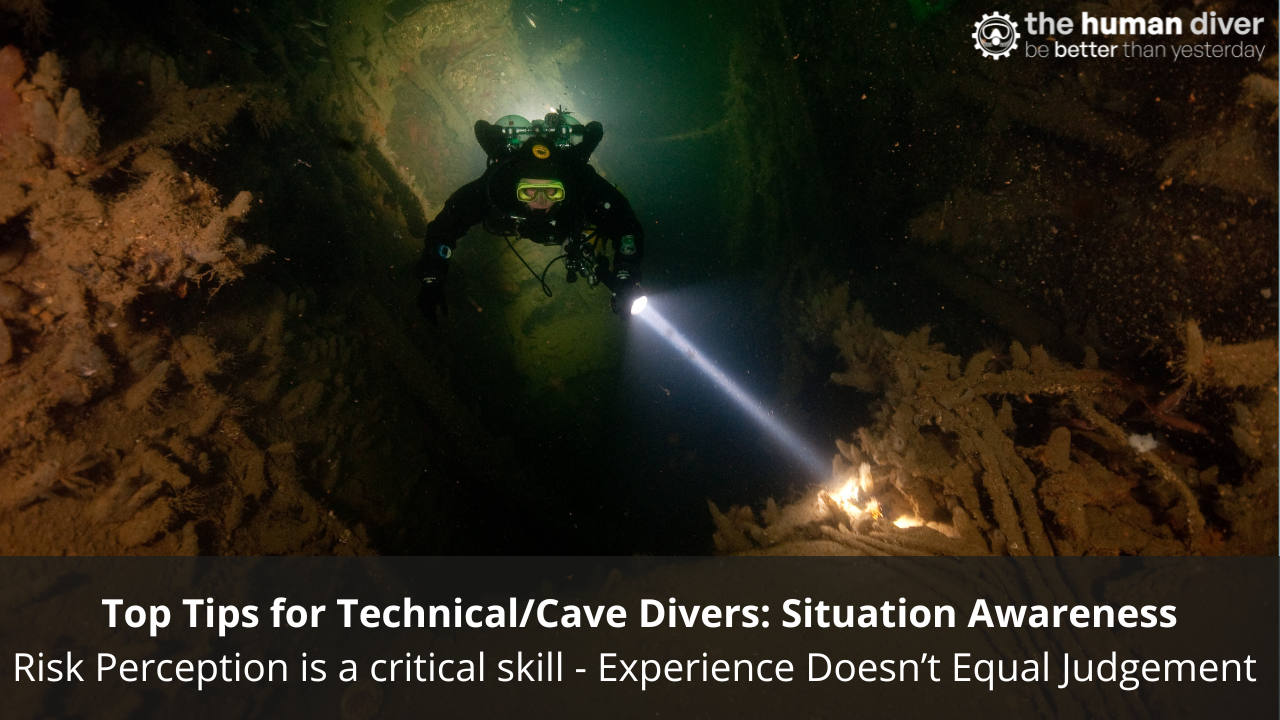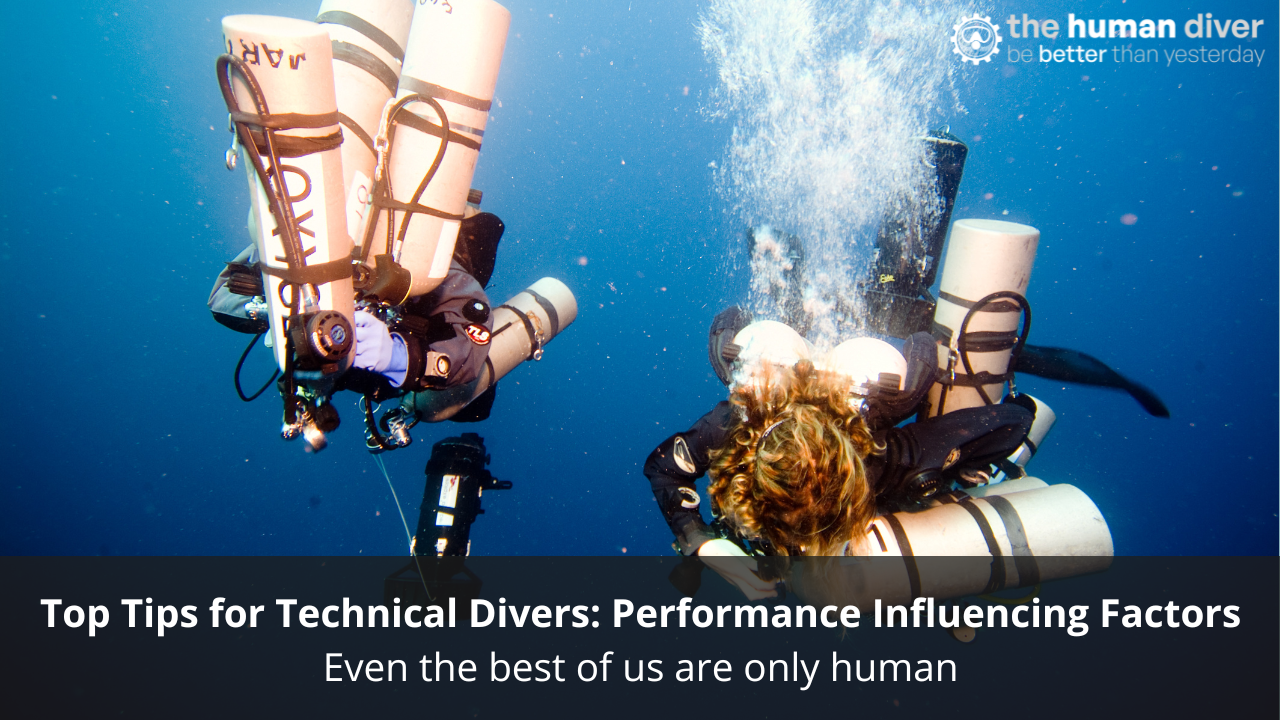
CCR Diver Goes Hypoxic on Surface – What Causal Reasoning Taught Me About Learning from Events
Apr 13, 2025An experienced CCR diver with 100s of dives was kitting up for a dive on a liveaboard boat. As the diver was about to get up from the bench, having not done their pre-dive checks on their rebreather, they realised they were light-headed and looked down to check the loop pO2 - their rebreather handset was off. As they turned the unit on, the pO2 in the breathing loop registered as 0.09. This was below the recognised value of 0.16 pO2 for safe breathing gas. They were very close to passing out. On the surface, this is recoverable; in-water or underwater, this can be fatal, as shown in the documentary ‘If Only…’
The above is a simple, linear story where counterfactuals can easily be applied*.
- They should have done their checks properly.
- They should not be breathing a loop below the safe oxygen level.
- They should have noticed the issues sooner
- … and so on.
They all focus on what didn’t happen to create a safe situation. If we want to make improvements, we need to shift the focus onto the conditions and factors that led to this diver being in the hypoxic situation they were in and look to change those.
*the narrative was specifically written to read this way, but this is a fairly common way of portraying something that didn’t go to plan.
The WITH Model
One of the tools taught during the HFiD: Essentials and HFiD: Masterclass series is the WITH Model. This model examines the performance shaping factors or error-producing conditions and was developed from the nuclear sector. You can read more about the model in this specific blog.
If we look at the conditions using the model, we can see where the diver’s performance was shaped and the margins for safety were eroded.
Work Environment:
This position was chosen because it was one of the few spaces left and was close to the exit gate. However, this meant that other divers getting ready to enter the water were passing their "spot" on the boat, and they had to regularly move aside for them to pass and this often meant they were blocked or stopped from what they were doing, leading to breaks in their kitting up process and train of thought. They were further distracted when other divers requested help with their gear.
Individual Capability:
The previous few weeks for the diver had been manic and non-stop. They had been working long days with a high workload in a very dynamic environment. This high-stress, high-workload had led them to feel run down, and they’d also picked up a chest infection. They believed they had recovered to an extent where they felt ok to dive again. The diver believes that sunk costs also played a part, as they would still have to pay for the trip if they’d had to cancel at short notice.
Although they had been off-shift and at home for the week before the trip, they didn’t feel like they’d been able to stop at home, highlighting that fatigue takes time to recover from.
Task demands:
Perceived time pressure possibly contributed to a feeling of being rushed to get kitted up and then in the water. The boat was quite big, so when divers weren't ready in time, there was an uncomfortable wait while being fully kitted, standing by the entry point waiting for the 'ok' from the skipper. This perceived time pressure creates a cognitive load, and this can lead to a downward spiral of stress and workload.
The feeling of ‘hurry up and wait’ is common in diving. It is not possible to keep the same high level of attention for a sustained period of time. As such, the importance of pre-dive checks can be missed, or divers believe they have completed them because of the way our brains work as prediction engines, constantly looking to the future.
Human Nature:
Stress! The diver knows they suffer from stress and recognises the signs in themselves. They know they can get visibly frustrated. Seemingly simple things then annoy the diver, and this creates a vicious circle. Realising that they were heading down that road, the diver asked another diver who was sitting out that dive to help them into their rebreather harness, and to pass their torch down once in the unit with the stage cylinder attached.
The culmination of factors.
The previous environmental distractions had contributed to the diver’s stress, and knowing that they needed to get into a ‘good place’ prior to entering the water, they thought the best thing to do was to take the chance during the pre-breathe to relax, and take long deep breaths and focus on the dive. This was when they started to feel light-headed and dizzy. Their pre-kitting up CCR checks using a formal checklist had been done. They then went through their final (mental) checks again and missed that they hadn't switched on the CCR electronics. Only on the second run through the pre-dive checks, when they went to check the loop pO2, did they notice the handset was still off. Switching this on, it burst into life showing 0.09 pO2. When the solenoid fired to raise the pO2, physiological recovery was almost instant.
What can be changed?
- Awareness of error-producing conditions and how team members and system design can contribute to these being present and reinforced (in a negative way).
- Effective teamwork that leads to mutual accountability so that cross-checking of pre-dive checks takes place.
- Bigger picture for this scenario, build electronic checklists into handsets that use sensors within the system to recognise that parameters are out of limits. This is already in place on some military and sports rebreathers although the unit has to be on for this to be work. For a ‘manual’ checking option, download the Dirty Dozen Pre-Splash Checklist from here.
So, what can we take away from this dive and the lessons of causal reasoning?
1. Counterfactuals kill learning.
When we say “he should have signaled” or “they should have followed the procedure,” we’re relying on hindsight. That’s a luxury the diver didn’t have. These statements are based on what didn’t happen, which, by definition, can’t be the cause of the event. They also create an illusion of control - we imagine that if someone had done the “right” thing, everything would’ve gone fine. But in real life, that kind of certainty doesn’t exist. By focusing on what didn’t happen, we rob ourselves of the opportunity to learn from what did and how it made sense for those involved.
2. Work-as-done is the real data.
The procedures, risk assessments, and dive plans represent work-as-imagined. They’re tidy and predictable. But work-as-done, the reality of the dive, is messy. It includes ambiguity, time pressure, environmental noise, gear quirks, and the constant push-pull between safety and task completion. Causal reasoning helps us build a clear picture of this lived experience. It shows us how the system operates in practice, not in theory. That’s where meaningful learning lives.
We’ve got to move beyond simply checking whether the diver followed the rules. The real question is: did the system support the choices they made, and if not, why not? In the underwater and surface world, where context shifts minute by minute, we need to understand behaviour in that context. That’s where growth happens.
3. Blame hides system flaws.
Blame is neat. It gives us a story with a beginning, a middle, and a clear villain. But most of the time, the so-called “villain” is a decent, competent human making the best decision they could under pressure. If we stop at blame, we risk repeating the same event, just with a different name on the incident report. (Diving Talks: Heroes and Villains in Diving)
Instead, we need to ask: What patterns exist? What does 'normal' look like? Was this an isolated error or the inevitable outcome of an unaddressed drift? Causal reasoning invites us to examine the system itself: the leadership/instructor expectations, the team norms, the physical conditions, and the information available at the time. And most importantly, it shifts the conversation from “Who messed up?” to “How did we get here, and how did it make sense to those involved so we can reduce the likelihood of it happening again?”
We dive in complex environments—physically, cognitively, and socially. That means our examinations and investigations need to match that complexity. Causal reasoning gives us a framework that respects the messy reality of diving, where people adapt, improvise, and make sense of uncertainty in the moment.
By exploring the story, we don’t let people “off the hook”, rather, it is about putting the hook in the right place. If we truly want to improve safety, resilience, and team performance in diving, we need to stop hunting for broken rules and start understanding the stories behind the decisions and the local rationality of those involved. The recent blog and video about the Linnea Mills case highlights this need by examining a tragic event.
Next time something doesn’t go to plan—pause. Ask not just what happened, but how did that make sense at the time?
That’s where the learning lives. And that’s how we get better.
Developing your knowledge and skills - LFUO
If you want to develop your skills in this domain, there are two new courses being launched on 1 July 2025. The first is LFUO: Essentials, which will provide you the core knowledge and some essential skills to learn from unintended or unexpected outcomes (LFUO) in a short self-paced online learning programme, and LFUO: Applied Skills, which is a live online programme over four days in which events are discussed and the theory applied.
You can sign up for these here:
LFUO: Essentials. Available any time.
LFUO: Applied Skills. 6, 10, 13 and 17 July, 17:00-21:00 UTC.

Gareth Lock is the owner of The Human Diver. Along with 12 other instructors, Gareth helps divers and teams improve safety and performance by bringing human factors and just culture into daily practice, so they can be better than yesterday. Through award-winning online and classroom-based learning programmes, we transform how people learn from mistakes, and how they lead, follow and communicate while under pressure. We’ve trained more than 600 people face-to-face and 2500+ online across the globe, and started a movement that encourages curiosity and learning, not judgment and blame.
If you'd like to deepen your diving experience, consider the first step in developing your knowledge and awareness by taking the Essentials of HF for Divers here website.
Want to learn more about this article or have questions? Contact us.










